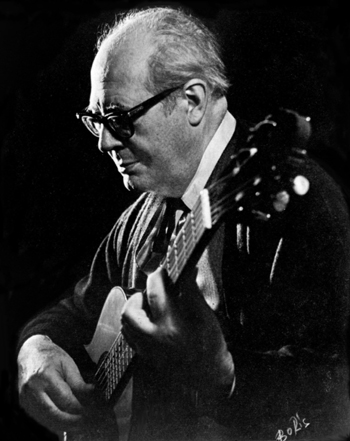Andres Torres Segovia is considered as the legendary Spanish classical guitarist from the beginning and mid of the twentieth century. Andres Segovia was born in Linares, Spain on February 21st 1893.
Though most of his yearly life has not been documented, it is belived that Andres Segovia started playing the guitar at the age of six. He learnt to be a flamenco guitarist and owned a guitar played by the greatest flamenco guitarist Paco de Lucena.

Segovia learnt from Agustinillo, a fan of Paco de Lucena. Agustinillo was an ameture guitarist. Later, during Segovia’s yearly years as a teenager, he moved to Granada where he further enhanced his guitar skills.
At the age of sixteen, Segovia gave his first public performance in Spain. This followed a professional concert in Madrid where he played the works of Fransico Tarrega and J.S. Bach. Miguel Llobet who was one of his tutors helped Segovia as an advicer and also helping him transcribe piano notes.
Segovia had a unique way of playing the flamenco guitar. He used his fingernails and the finger tip in combination to produce a sharper tone. This helped him create an unique sound which was sharper and clear. This type of playing was later adopted by many classical guitarists. Segovia is also regarded as one of the first to use nylon strings instead of gut strings after the World War Two.
However, by the beginning of the twentieth century, the craze and culture of classical guitar faded and was present only in Rio de la Plata and Barcelona. Segovia along with Llobet tried bringing back the glory of guitar through various recordings, radio and air travels.
Segovia had five purposes which he outlined in Guitar Review Issue 32.
- To extract the guitar from the noisy and disreputable folkloric amusements.
- I requested the living composers not in the field of guitar to write for me. This was the second of my purposes: to create a wonderful repertoire for my instrument.
- My third purpose was to make the guitar known by the philharmonic public of the world.
- To provide a unifying medium for those interested in the development of the guitar. This I did through my support of the now well known international musicological journal, the Guitar Review
- I am still working on my fifth and maybe the last purpose, which is to place the guitar in the most important conservatories of the world for teaching the young lovers of it, and thus securing its future.
Through his long career, Segovia earned many awards and achievements. He was awarded the Danish Sonning Award in 1974 and the Grammy Award in 1986 for Lifetime Achievement. Segovia was ennobled in 1981 by King Juan Carlos I formally styled as "El señor don Andrés Torres Segovia, marqués de Salobreña" (the Most Illustrious Lord The Marquess of Salobreña). Segovia was also awarded the honours Ph.D, honoris causa from ten universities.
Two movies were made on Andres Segovia life when he was 75 and 84 years old. Andres was seen playing even in his ripe age of 80s. At the age of 94, the classical guitar legend Segovia died in Madrid of a hart attack. He was buried in Casa Museo de Linares in Andalusia.
